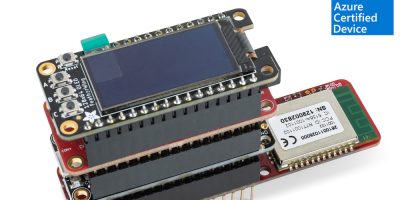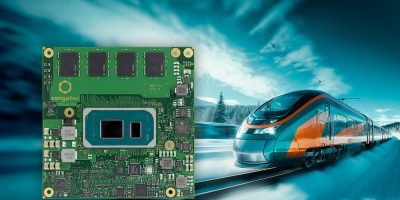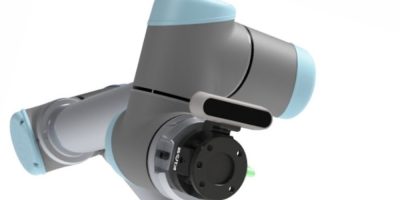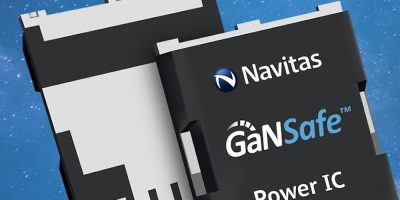The Calypso IoT design kit is an evaluation kit with pre-installed firmware by Würth Elektronik which enables the creation and evaluation of secure end-to-end IoT solutions using Microsoft’s Azure IoT Central.
The design kit is a robust hardware platform for rapid prototyping comprising the Würth Elektronik FeatherWing sensor, its Calypso Wi-Fi FeatherWing, Adafruit’s FeatherWing OLED and Feather M0, which works with the ATSAMD21G18 ARM Cortex M0+ processor, in addition to the pre-installed firmware from Würth Elektronik.
The FeatherWing development board combines sensors, power modules and wireless connectivity in one kit. Hardware and software have been pre-tested and verified for integration into Microsoft’s Azure IoT central.
The Calypso IoT design kit makes it easy to develop the decentralised recording of sensor data, which are processed using the pre-installed UX und API interface Azure IoT Central. The FeatherWing sensor monitors MEMS absolute-pressure, three-axis acceleration, temperature, and relative-humidity sensors, all from Würth Elektronik. The Calypso IoT design kit can be used, for instance, to develop monitoring and control applications for areas such as industrial automation, the healthcare sector, smart home, smart cities, smart grids and smart farming.
“We have joined the Azure Certified Device Program to ensure that customers can swiftly implement IoT solutions using hardware and software tools that have been pre-tested and verified for integration into Azure IoT,” explained Adithya Madanahalli, IoT engineer at Würth Elektronik eiSos in the business unit for Wireless Connectivity & Sensors.
The Calypso IoT design kit is available now and can be combined with other FeatherWings in Würth Elektronik’s and Adafruit’s product portfolios.
Würth Elektronik eiSos Group is a manufacturer of electronic and electromechanical components for the electronics industry. Würth Elektronik eiSos is one of the largest European manufacturers of passive components and is active in 50 countries. Production sites in Europe, Asia and North America supply a growing number of customers worldwide.
The product range includes EMC components, inductors, transformers, RF components, varistors, capacitors, resistors, quartz crystals, oscillators, power modules, Wireless Power Transfer, LEDs, sensors, radio modules, connectors, power supply elements, switches, push-buttons, connection technology, fuse holders and solutions for wireless data transmission.
Sector News
COM Express Type 6 module is certified for railway applications
Proven shock and vibration resistant for harsh environments, congatec’s conga-TC570r COM Express Type 6 Compact modules has been IEC-60068 certified for operation in railway applications and extreme conditions, such as extended temperatures, rapid temperature changes, shocks and vibrations.
The COM Express Type 6 Compact modules are based on the 11th Generation Intel Core processor family (code named Tiger Lake) and are suitable for operation in railway applications. Customers benefit from an application-ready building block with proven ruggedness for various mission critical applications, said congatec.
The IEC-60068 certified conga-TC570r module suits various new railway applications, including train control and management systems (TCMS), predictive maintenance, passenger information systems, video surveillance and analytics, ticketing and fare collection, and fleet management and optimisation. They are also suitable for applications beyond transportation exposed to extreme conditions including automation, autonomous guided vehicles (AGV), autonomous mobile robots (AMR). These applications require advanced embedded computing capabilities provided by Intel’s 11th Gen Core processor technology, noted congatec, in an industry-compliant design certified to meet all required IEC-60068 specifications.
The conga-TC570r module has undergone rigorous testing and certification against various IEC-60068 standards. It is certified for reliable operation under extended temperatures ranging from -40 to +85 degrees C, including change of temperature (IEC-60068-2-14 Nb) and rapid change of temperature (IEC-60068-2-14 Na). It also provides shock and vibration resistance on the basis of DIN EN 61373 April 2011 category 2 (railway applications). The module is also protected against severe environmental conditions, such as high humidity, in accordance with IEC-60721-3-7 class 7K3, 7M2. Optional features include conformal coatings to enhance resistance to liquids and moisture further.
The rugged COM Express Compact Type 6 11th Gen Intel Core modules with soldered RAM and In-Band ECC (IBECC) are available in standard configurations, 8from two cores and two threads to four cores and eight threads, up to 12Mbyte cache and 48 to 96 graphics execution units. Customisation options are available upon request.
congatec offers also corresponding carrier boards and comprehensive cooling solutions for its IEC-60068 certified COM Express module, allowing for fast application design. The heat pipe -based passive cooling ensured optimided heat dissipation and ruggedness, said congatec, thanks to the fanless design, which extends the module’s lifetime and reliability.
Additionally, congatec’s design-in and compliance measurement services for PCIe Gen4/5 and USB4 simplifies and accelerates application design, improving design security and reducing time-to-market.
Universal Robot sensor kit simplifies integration of force torque sensors
Multi-axis force torque sensor manufacturer, Bota Systems, has introduced the Universal Robot FT sensor kit. The sensitive six-axis force torque sensor is certified by Universal Robots for use with the company’s collaborative robots.
The sensors provide sensitive haptic feedback to enhance the precision of applications, said Bota Systems. A robotic force torque sensor measures force and torque when they are applied on its surface. By using the measured signals in real-time feedback control, robots can perform challenging interaction tasks. The sensor of this type that is used most in robotics is a complete six-axis sensor, which measures forces and torques on three axes each.
The sensor kit is part of the UR ecosystem. It provides everything needed to get up and running quickly, including the lightweight SensONE sensor traducer with integrated electronics, cabling, power supply, and adapters and fasteners. The kit also includes URCap software that integrates in to UR’s graphical programming interface PolyScope. The software consists of drivers to provide access to the force torque data, as well as program templates to easily create force sensitive applications and to save development time.
The sensor is suitable for UR20, Universal Robots’ latest collaborative robot, or cobot, which has a reach, of up to 1750mm. It is also capable of the company’s heaviest payload, up to 20kg. The small footprint is just 245mm in diameter, which allows this industrial cobot to enable customers to automate more applications where heavy objects need to be lifted over a longer distance.
Navitas unveils GaNSafe, a protected GaN power semiconductor
Rugged and protected, the fourth generation GaN technology from Navitas Semiconductor offers efficiency, power density and reliability, opening up GaN to applications such as data centre, solar and electric vehicle use.
GaNSafe is a wide bandgap power platform for demanding, high power applications. The power ICs integrate GaN power and drive, with control, sensing and protection to enable faster charging, higher power density, and greater energy savings. It is covered by a 20 year warranty – an industry first, said Navitas.
The initial, high power 650/800V GaNSafe portfolio covers a range of RDS(on) from 35 to 98 mOhm in a robust, and cool-running surface mount TOLL package, to address applications from 1,000 to 22,000W.
Additional application-specific protection features have been introduced for the power ICs to perform under grueling high-temperature, long-duration conditions. Safety features include protected, regulated, integrated gate drive control, with zero gate source loop inductance for reliable high speed 2MHz switching capability to maximise application power density.
There is also high speed short circuit protection, with autonomous ‘detect and protect’ within 50 nanoseconds which is four times faster than competing discrete solutions.
There is also electrostatic discharge (ESD) protection of 2kV, compared to zero for discrete GaN transistors and an increased voltage capability of 650V continuous, and 800V transient to protect during extraordinary application conditions.
The TOLL package has just four pins and programmable turn-on and turn-off speeds (dV/dt) to simplify EMI regulatory requirements.
Unlike discrete GaN transistor designs, with voltage spikes, undershoot and specification breaches, GaNSafe delivers an efficient, predictable, reliable system, said the company. The TOLL package has achieved IPC-9701 mechanical reliability standard as well as reducing connections, compared to multi-chip modules and with improved cooling capability, said Navitas.
Navitas’ market-specific system design centers offer complete platform designs with benchmark efficiency, density and system cost using GaNSafe products to accelerate customer time-to-revenue and maximise chance of first-time-right designs. These system platforms include complete design collateral with fully-tested hardware, embedded software, schematics, bill-of-materials, layout, simulation and hardware test results.
“Our original GaNFast and GaNSense technologies have set the industry standard for mobile charging, establishing the first market with high-volume, mainstream GaN adoption to displace silicon,” said Gene Sheridan, Navitas Semiconductor’s CEO and co-founder. “GaNSafe takes our technology to the next level, as the most protected, reliable and safe GaN devices in the industry, and now also targeting 1.0 to 22 kW power systems in AI-based data centres, EV, solar and energy storage systems. Customers can now achieve the full potential of GaN in these multi-billion dollar markets demanding the highest efficiency, density and reliability.”
The GaNSafe portfolio is available immediately to qualified customers with mass production expected to begin in Q4 2023.
About Smart Cities
This news story is brought to you by smartcitieselectronics.com, the specialist site dedicated to delivering information about what’s new in the Smart City Electronics industry, with daily news updates, new products and industry news. To stay up-to-date, register to receive our weekly newsletters and keep yourself informed on the latest technology news and new products from around the globe. Simply click this link to register here: Smart Cities Registration







